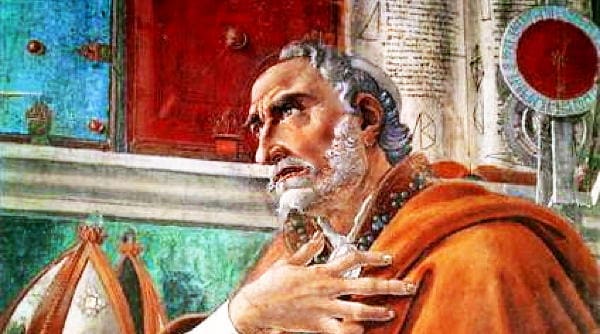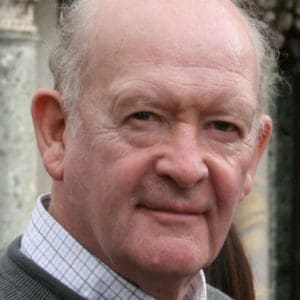Mini-Course on Prayer
Section 2 Christian Meditation
Part 14 – Mystical Premonitions

Editor’s Note: In Part 13, David Torkington discussed Genuine Christian Meditation and its Counterfeit. Today, he will talk about Mystical Premonitions.
Guido the Carthusian
After the Reformation, a new terminology began to replace the older monastic terminology for the beginning of mental prayer devised by Guido the Carthusian (1114 – c.1193). The reading of the scriptures was no longer mentioned as the first rung on the ladder of prayer that leads to contemplation (Lectio), at least outside the monastic life. It was of course not forbidden, but after the Reformation, it was frowned upon by the Church, at least for the laity, for fear they would misinterpret the scriptures as the reformers had done. It was also feared they may make use of some of the many new translations of the Bible in which orthodoxy had intentionally been ‘lost in translation’. In the new terminology then, Meditation not Lectio was the first step in mental prayer. What was called Oratio before now came to be called Affective Prayer when the emotions were moved by the loving and adorable person of Christ as the person praying began to realize that Christ’s loving was directed towards them personally. As in human loving words are gradually used less and less as union comes ever closer. In his book Women in Love D.H. Lawrence puts it this way. “Words travel between the separate parts, but in the perfect one there is a perfect silence of bliss.” Prayer then becomes simpler and simpler and is therefore understandably called Prayer of Simplicity or Acquired Contemplation or The Prayer of Simple Regard when all a person wants to do is to be lost in the loving gaze of the one whom they know and experience as loving them now.
The first step therefore in mental prayer was called Meditation and it included the prayerful reading and reflection on the scriptures for those immune to the dangers of falling into the errors of the reformers. Others were encouraged to read the lives of Christ written by some of the great spiritual writers or to make use of the many meditation manuals or the exercises of St Ignatius or devotions like the Way of the Cross or the Rosary. The Rosary is so important that I will be dealing with it in some detail later. Today, however, we are living in a completely different spiritual climate when we should all be encouraged to begin as the first Christians began with the scriptures themselves, for there are now so many good and reliable translations for us to choose from. However, it must be said that like St. Augustine, many of us first experienced the love of God in his creation long before we were introduced to any systematic form of mental prayer. In fact it was these experiences that so moved us, as they moved St Augustine, that made us seek God in himself. This is the point at which a genuine searcher is led on, like St. Augustine, to a more formal form of mental prayer where God’s love made flesh is to be discovered in the Gospels in the most perfect human being who ever lived.
St. Augustine’s Search for God
Like many of us St. Augustine first encountered the love of God mirrored in the enchanting landscapes created on earth and the beautiful fauna and flora that filled them. So too in the great artistic works of the men and women who tried to reflect their beauty and grandeur in their paintings and their music and in their artistic masterpieces. But like so many others who would follow him, St. Augustine’s fascination with the reflections of God’s glory would lead him onward to his greatest masterwork, God’s love-made-man in Jesus Christ. The beginning of his search then was prompted by what I can only call mystical premonitions that many of us may well have experienced too. They come more directly from God and involve brief albeit fleeting experiences of what, or rather of whom, we want to experience all the time, but for our human weakness. Here is the classic example of the point I am trying to make, taken from St Augustine’s Confessions:
“When first I knew you, you lifted me up so that I might see that there was something to see, but that I was not yet the man to see it. And you beat back the weakness of my gaze, blazing upon me too strongly, and I was shaken with love and with dread. You called and cried to me and broke open my deafness and you sent forth your beams and shone upon me and chased away my blindness. You breathed fragrance upon me, and I drew in my breath, and do now pant for you. I tasted you, and now hunger and thirst for you. You touched me, and I have burned for your peace. So I set about finding a way to gain the strength that was necessary for enjoying you. And I could not find it until I embraced the mediator between God and man, the man Christ Jesus, who is over all things, who was calling unto me saying, I am the way, the truth, and the life.”
From Meditation to Contemplation
The experiences that St Augustine first enjoyed were common to many before and after him, although few can explain the experiences as he can. Many people have enjoyed what are sometimes called ‘natural’ mystical experiences to which I have just referred but they find it difficult to express them. Whilst the poets spend all their time trying to transpose them into words and capture them in sublime poetry, Augustine rushes on to seek the source from whom they came.
St Augustine spent years coming to know Jesus by pouring over his every word in the Scriptures and by responding in his own words until a sort of spiritual conversation developed in his prayer life. To begin with the knowledge was predominantly intellectual but it gradually became more and more emotional as he experienced the love of Christ reaching out to envelop his mind and heart and his whole being. Now he began to respond in the language of love (Affective Prayer), as his deepest feelings awoke to the love he experienced reaching out to envelop him. Finally, when everything had been said that needed to be said, he found that all he wanted to do was to be still, to savour in silence what he had received in a deep but heartfelt contemplative stillness (Acquired Contemplation).
What happened to St Augustine will happen to all who follow his example. This contemplative stillness is similar to the experience of those who come to the heights of human love as John Donne describes so beautifully in his poem The Ecstasy
We like sepulchral statues lay;
All day, the same our postures were,
And we said nothing, all the day.
Meeting the Person of Christ
It is into a similar silence that we must go if we wish to journey on, in, with and through Christ to contemplate the glory of the Creator himself. That is why when we begin to meditate in earnest, as St Augustine did, we must begin not just with the scriptures in general, but with those parts of the sacred books that enable us to meet the person of Christ – the most lovable and adorable human being ever to have walked on this earth. The Gospels make it clear that his personal and ever-ready love is not just for those he met in person while he was on earth, but for each of us in person for whom he came, for whom he died and for whom he rose from the dead. And the purpose of this love is to take us up in, with and through him to the place where the primeval desire for the fullness of love that we first experienced long ago will find its fulfillment.
Closer Than We Are to Ourselves
In short, begin your meditation by primarily using the Gospels to center your whole attention on the person of Jesus so that knowledge can gradually turn to love. Affective Prayer begins when the sparks of love that are generated there begin to lead upwards, as it were, and into the Risen Christ. Here the sparks of love that were produced in us are united to the infinite flame of love that burns in him now. For although our meditation begins by turning to the Christ who once lived to ignite our love for him, that love then rises to be united to him as he is now in his risen glory. It is possible to love someone who once lived in the past, but it is not possible for that love to unite us with that person now. We can only be united in love with a person who is alive and loving us now. That person is Our Risen Lord whom St Augustine not only knew was alive and living amongst us now, but who was, in his words, ‘closer to us than we are to ourselves’.
But for this closeness to become a deep personal and loving union we must learn to love him over and over again and ever more deeply. Never be deceived into thinking that the Risen Christ is some sort of purely spiritual realization of the person that he used to be on earth. It must always be remembered that he still has a real physical body that is even more perfect than the body known to and loved by his friends who were close to him whilst he was on earth. The truth is that it was even more perfect, because all the lovable human character traits and all the captivating human feelings, emotions and passions seen in the selfless giving of himself for others, are in fact all brought to perfection in him. They are all brought to perfection in him by the power of the same love of God who raised him from the dead. and can be both experienced and received by those who are open to receive his love now.
All these realizations will eventually lead to the desire, not only to love Christ, but to enter into him now, for union with the fullness of love is the ultimate destiny and desire of every human being. In prayer this desire is set alight with the sparks that eventually light the flame of love that sets us afire in Christ, enabling us to contemplate the Father, in with and through him. It is called Acquired Contemplation to distinguish it from pure mystical contemplation that I will be dealing with in the third part of this series.
In conjunction with this article please listen to the podcast of a talk I gave at a retreat at Belmont Abbey.
Next time I will put a spiritual microscope on a hermit in the act of praying to give a practical example of what I have been trying to explain in this article.
These ideas are developed further in my two major works on prayer – Wisdom from the Western Isles and Wisdom from the Christian Mystics, and Wisdom from Franciscan Italy that show how deep contemplative prayer grows to perfection.
+
Art for this post: St. Augustine by Sandro Botticelli (public domain), via Wikimedia commons.




